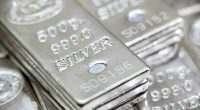Gold, often considered a safe haven during economic uncertainties, showcased its enduring appeal last week. Despite minor fluctuations, it maintained robust year-to-date gains, reinforcing its critical role in global financial markets. The gold price is determined by a lot of factors like its uses, it can also be determined by the cost of mining.
Gold price opened the week at $2,659 per ounce and experienced a high of $2,727 midweek before closing at $2,647.50 on Friday, marking a 1.22% weekly decline. This minor dip was attributed to profit-taking by investors after significant midweek gains. Year-to-date, however, gold boasts a 29% rise, outperforming most other commodities.
The performance of gold last week was underpinned by macroeconomic factors such as a weakening U.S. dollar and anticipation of further interest rate cuts by the Federal Reserve. The decline in the dollar index, coupled with inflationary concerns, bolstered gold’s appeal among investors seeking to hedge against currency depreciation and economic instability which contributed to the stability of gold price.
Additionally, central banks around the globe have been significant buyers of gold, driven by efforts to diversify reserves away from the dollar. Analysts also noted that geopolitical uncertainties, including tensions in the Middle East, played a role in sustaining demand.

The rally in gold prices had mixed effects across global markets. In price-sensitive regions like China and India, consumer demand softened due to the higher costs in local currencies. Meanwhile, the European and North American markets saw sustained investor interest, particularly from institutional buyers.
On the technical side, analysts identified resistance levels around $2,700, which, when combined with profit-taking pressures, caused midweek pullbacks. However, support at $2,625 ensured that gold maintained its broader upward trajectory.
Gold’s resilience as an investment remains unchallenged. It continues to serve as a hedge against inflation and a buffer against market volatility. With central banks prioritizing gold purchases and investor sentiment remaining bullish, analysts predict further gains in early 2024, provided macroeconomic conditions remain favourable.
Looking forward, gold’s trajectory will depend on the Federal Reserve’s policy decisions and broader economic indicators. If inflation persists and rate cuts materialize, gold is expected to continue its upward climb. Analysts suggest that breaking resistance at $2,700 could pave the way for new highs, solidifying gold’s position as a critical asset in diversified portfolios.
Despite a challenging global economic landscape, gold prices remain stable. Its performance last week is a testament to its enduring value, even as markets fluctuate. As central banks and investors alike turn to gold, its role as a cornerstone of financial security is more evident than ever.












